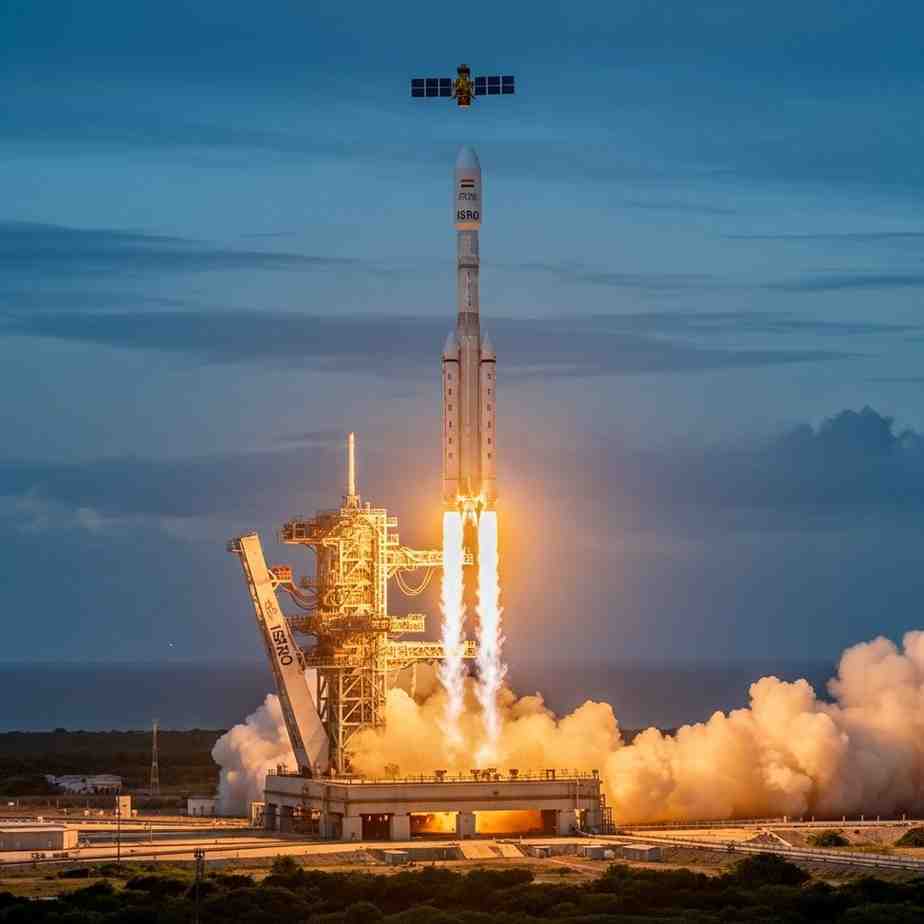
- India’s space capabilities reached a new landmark as the Indian Space Research Organisation (ISRO) successfully launched its heaviest communication satellite, CMS-03 , using the LVM3-M5 rocket , popularly called ‘Bahubali’ . The launch took place from the Satish Dhawan Space Centre, Sriharikota , at 5:26 pm , demonstrating India’s growing self-reliance in space technology.
Record-Breaking Launch of CMS-03
- Weighing approximately 4,410 kg , CMS-03 is the heaviest satellite ever launched from Indian soil into Geosynchronous Transfer Orbit (GTO) . The satellite is designed to enhance multi-band communication services across India and its surrounding oceanic regions. The LVM3-M5 , standing 43.5 metres tall , performed flawlessly, highlighting India’s capability to launch heavy payloads—previously a domain dominated by global space powers.
Technological Milestone for India’s Space Programme
- The LVM3 is a three-stage heavy-lift rocket with solid strap-on boosters, a liquid core stage, and a cryogenic upper stage. Sunday’s mission was the fifth operational flight of the vehicle, reflecting ISRO’s technical maturity and reliability . ISRO Chairman V Narayanan noted that the organisation has evolved from launching its first sounding rocket in 1963 to undertaking complex, self-sustaining missions, marking decades of progress in space science and technology.
Expanding Frontiers in Space Exploration
- India’s achievements extend beyond CMS-03. Notable missions include Chandrayaan-3 , which made India the first country to land near the Moon’s South Pole in 2023; Aditya-L1 , India’s first solar observatory placed at the L1 point in 2024; and XPoSat , studying cosmic radiation. The country is also progressing toward human spaceflight through the Gaganyaan mission and has tested the Space Docking Experiment (SpaDeX) in 2025 , showcasing readiness for future crewed missions.
Future Vision: Space Station and Human Missions
- India’s Space Vision 2047 targets self-reliance, commercial leadership, and crewed lunar exploration. Upcoming projects include the Bharatiya Antariksh Station , a Venus Orbiter , and continued expansion of private space startups and launch facilities in Tamil Nadu and Sriharikota. CMS-03’s successful launch reinforces India’s role as a leading force in global space exploration .
Key Facts for Exams:
-
CMS-03: 4,410 kg , India’s heaviest communication satellite
-
Rocket: LVM3-M5 (‘Bahubali’) , 43.5 metres, three-stage heavy-lift vehicle
-
Launch Site: Satish Dhawan Space Centre, Sriharikota
-
Notable missions: Chandrayaan-3 (2023), Aditya-L1 (2024), XPoSat
-
Future Projects: Gaganyaan, Bharatiya Antariksh Station, Venus Orbiter
Month: Current Affairs - November 03, 2025
Category: technological prowess, space